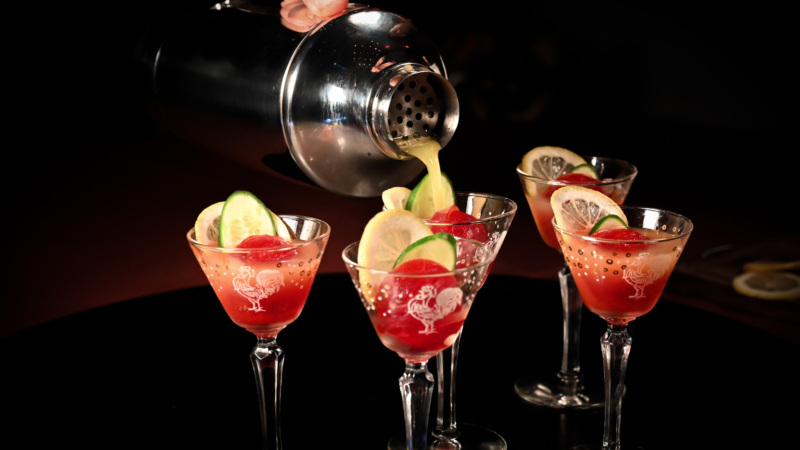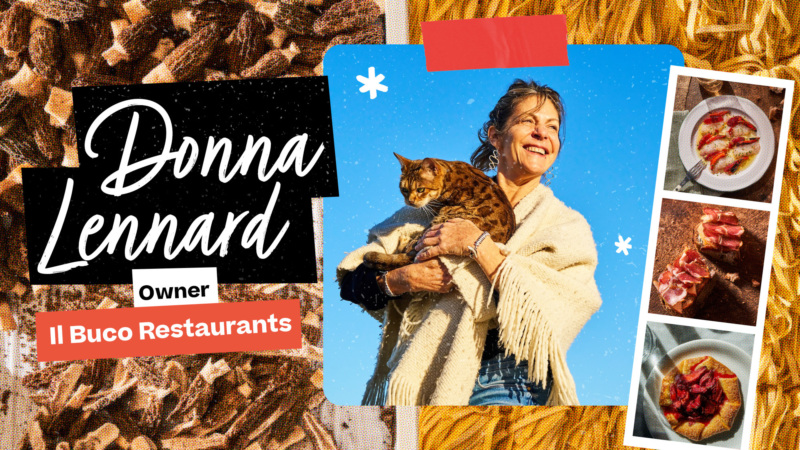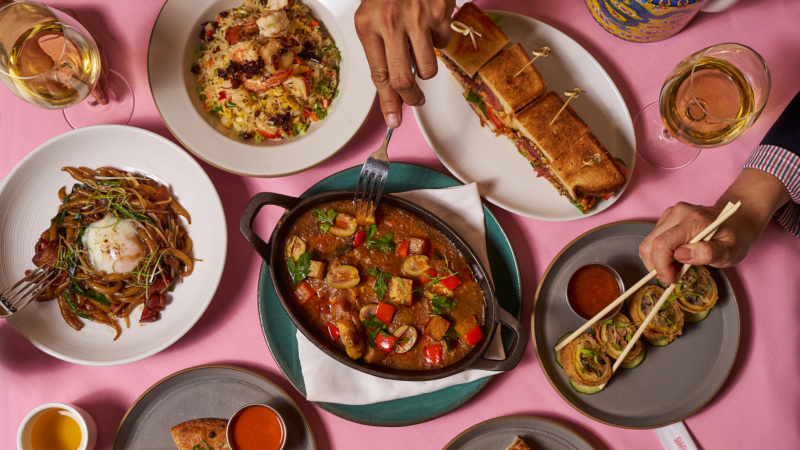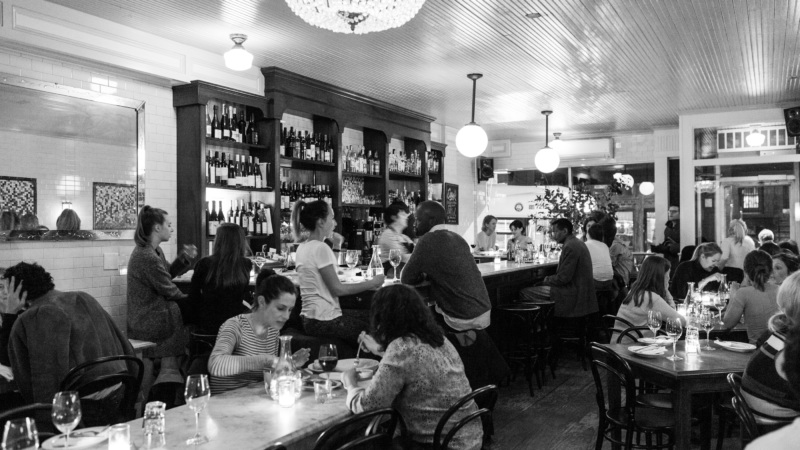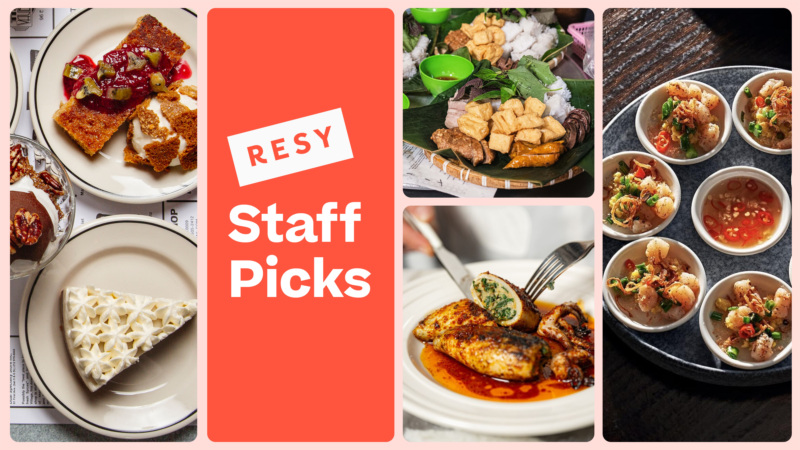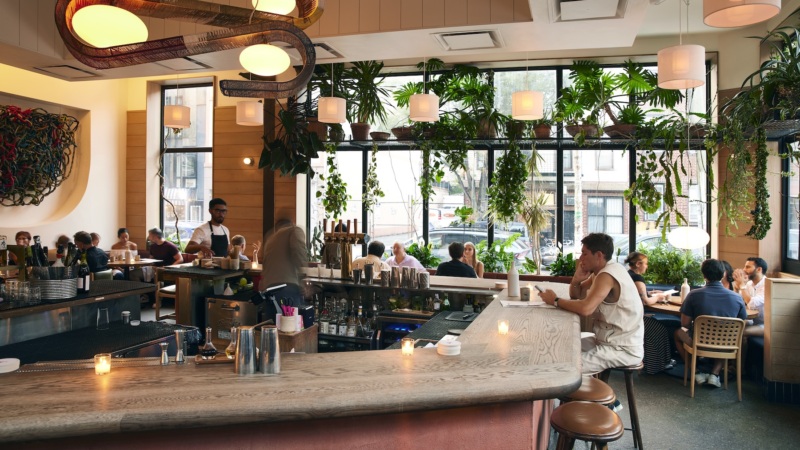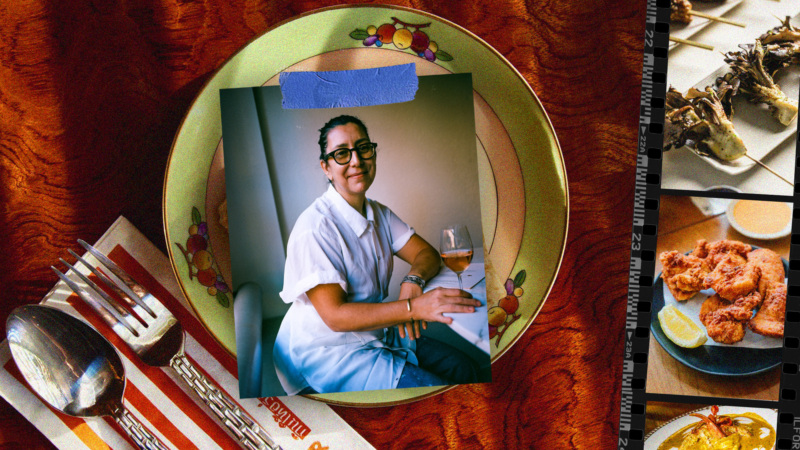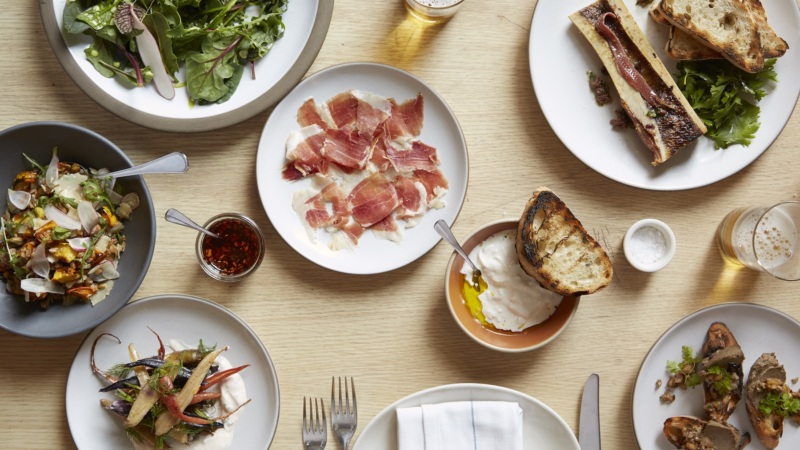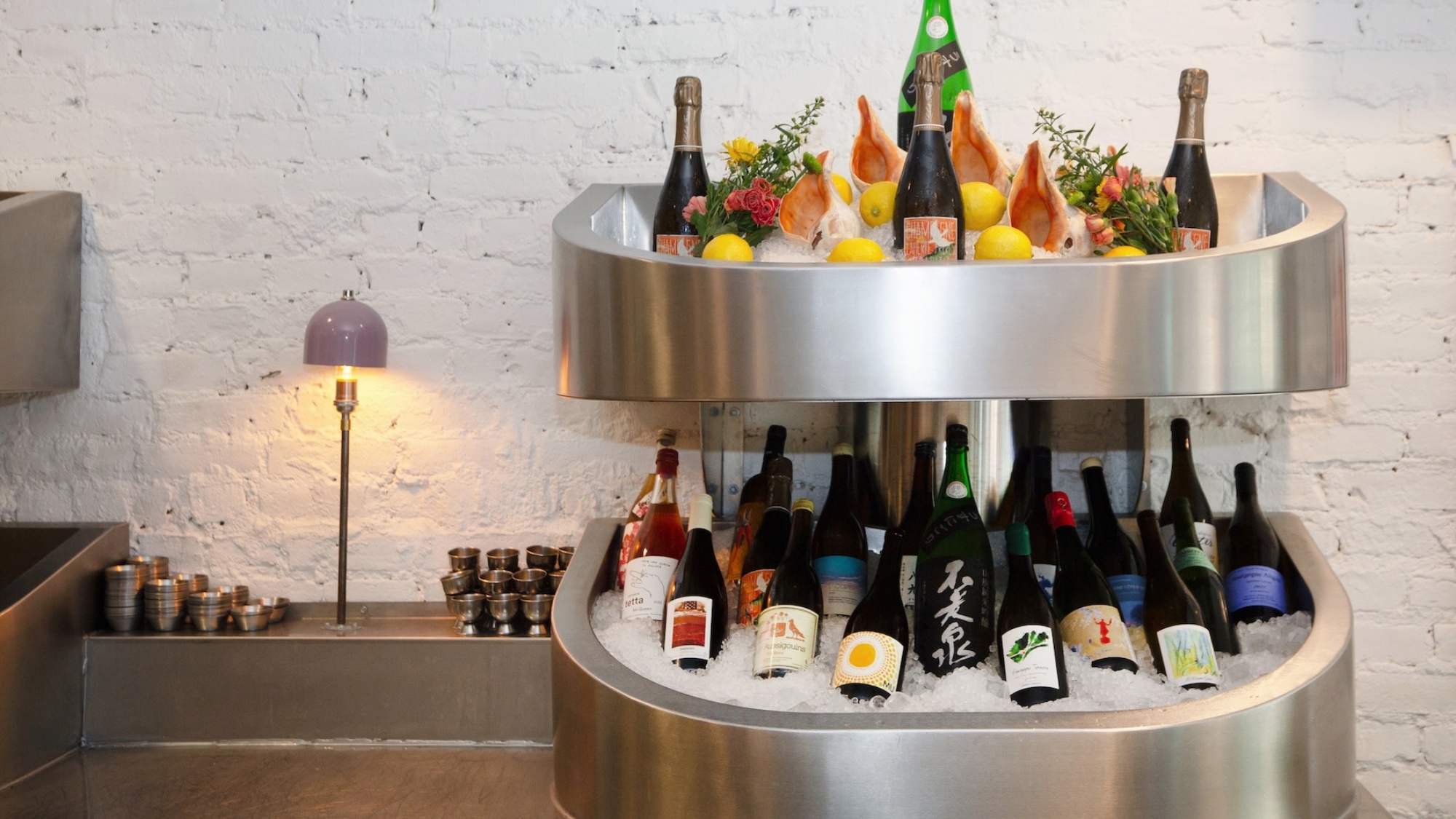
Penny’s Chase Sinzer Wants You to Know: With Wine, Sharing Is Caring
On Oct. 5, New York restaurants Penny and Claud are hosting a joint wine party, powered by Resy. Qualified American Express card members can get early access to book their tickets starting Tuesday, Sept. 10 at 12 noon via Global Dining Access by Resy. More info here.
Chase Sinzer may be throwing a party, but he wants you to know it’s very, very serious.
Sort of. Sinzer, the co-owner of Penny and Claud, is turning both venues, located at 90 E. 10th Street at the edge of the East Village, into a big wine bash during the afternoon of Oct. 5. The small print is key: free corkage, one bottle per person, for anything not found on the restaurants’ wine lists.
Yes, this probably sounds like a wine nerd’s afternoon in paradise, which is precisely the point. Sinzer is throwing this in large part as a tribute to the wine-soaked afternoons he enjoyed earlier in his career, which includes managing the dining room at Danny Meyer’s Maialino, and serving as wine director at Momofuku Ko and Chef’s Table at Brooklyn Fare. In the heyday of the mid-2010s, wine professionals would gather at restaurants like Ko or The Modern to drink great bottles and schmooze.
It would be too simple to say the pandemic killed the vibe. But there is an increasing sentiment among New York wine types that these opportunities are fewer and farther between — that the trading of knowledge and sips of great bottles has become rare. The reasons are complex. Blame systemic shifts in the wine business. Blame inflation. Blame the anointing of the martini as the current It Drink.

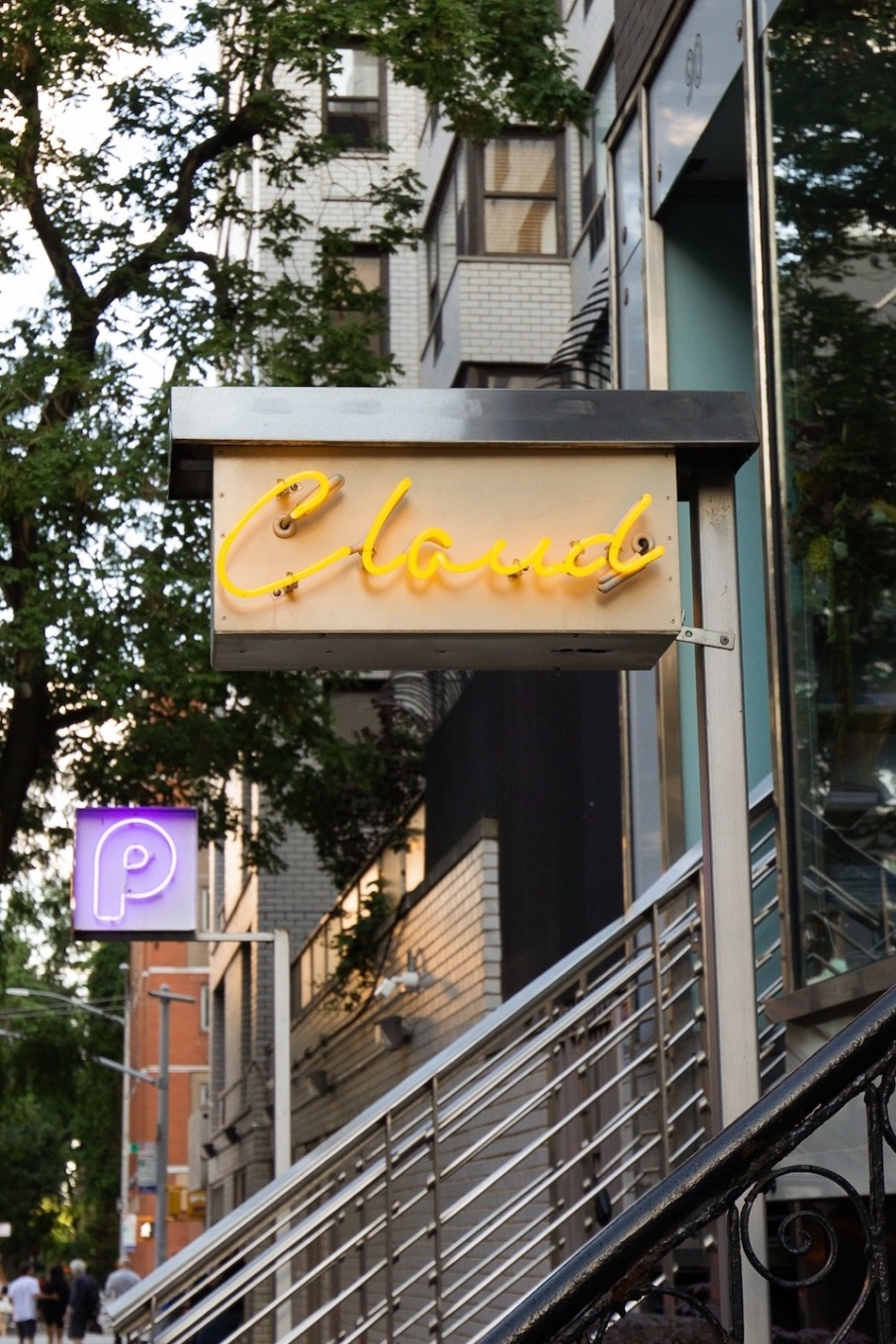
One salient thing to blame in particular, though: dramatic price hikes that have hit desirable bottles from most top producers. To consider one example, a bottle of Pierre Gonon’s red Saint-Joseph, a syrah-based wine from a rising-star Rhône domaine, could be had for $125 on a New York list in 2016. Today, the same bottle often tops $350; in at least one case, it’s nearly $600. If you applied that inflation to food, the prix fixe at Le Bernardin, about $125 in the mid-2010s, should also now be $600. (Thankfully, it’s now $210.)
In fairness, this is not a new crusade for Sinzer. And he acknowledges that the restaurant world has changed — there’s less loyalty and repeat business for restaurants than in the past. Momentum jumps from hot new thing to hot new thing. So in his view, if wine is to remain a part of dining out in the city, something needs to change.
Beyond that, he worries that those coming into the industry today lack the opportunities to educate themselves about what iconic wines taste like — which, in the end, makes for less interesting wine lists and less knowledgeable restaurant staff. This is a different issue than the purported demise of the sommelier, a thesis that comes up every few years. But it’s related, in that less expertise means less motivation for people to spend on wine in a restaurant, which creates a downward spiral of sorts.
Certainly, Sinzer and his chef-partner Joshua Pinsky are certainly doing their part to keep the faith at their two restaurants — they employ two wine directors, Ellis Srubas-Giammanco, an alum of Chambers, and Julia Schwartz, formerly at Rezdôra, and four sommeliers between them. But this wine party is their way of addressing the concern — in a not-unpleasant way — while underscoring how important wine remains to the restaurant industry, martinis be damned.
We sat down with Sinzer to discuss his party planning, and to take pulse of the state of wine in New York restaurants today.
Editor’s Note: This interview has been lightly edited for length and clarity.
Resy: So how’s this thing going to unfold?
Chase Sinzer: The format is about as rigorous as it sounds from the word “party.” This is supposed to be a gathering of people that are interested in wine. I think it will be people that write about wine, people that collect wine, people that sell wine, people that are interested in wine. And when everybody shows up, what do they do? You bring some wine, you order some wine, we pour you some Champagne, and there’s a variety of snacks that represents each restaurant. And in our dream world, these people get to be in the same place together for a few hours, drink a bunch, and talk a bunch.
What made you feel this needed to come to be?
A bunch of factors. I know in my friend group, which is a decent mix of people in different wine jobs, we’ve all felt that we haven’t spent as much time together as we used to. We felt a disconnect between our 35-and-older generation and people that were younger. And I guess I do feel a sense of gratitude toward the people that were older than me. We used to do this at The Modern. I did it once at Ko, where everybody just got together and opened wine. And I really hope that we can have some people of my generation, but also people of the younger generation, come together and take part in something that used to be more prevalent in New York City.
Paint the picture, if you will. Whether it was The Modern, Ko, wherever. What were the halcyon days like?
The things that were opened are far more expensive now. That’s obviously the first and biggest challenge. That’s why these things were so exciting. I remember when [wine director Michaël] Engelmann would throw these at The Modern, you’d sit down and you’d have lunch, but everybody was going from table to table. I was in awe of the wines that were being opened. I was shocked that I was able to taste them. I was honored to be invited to a group of people that were way cooler than me, that had tasted way more wine than me, and that were really generous with showing me and all of my friends who were coming up what these wines were supposed to taste like, in a non-dogmatic way.
It was a party. You don’t think about the dining room at The Modern or Ko as a party, but we were all just standing up and talking and drinking wine. And it was like, this person did this in the vineyards from X year to Y year, without it being too much of a lesson. It was all about sharing stuff. And it’s something I remember with a lot of love. I could only hope that somebody leaves here and feels this was a tenth as fun as what I had back in the day.
So this wasn’t just opening cool stuff. There was a part of this that informed you and helped you to gain skills and knowledge you needed. There was a purpose.
Absolutely. We have four sommeliers here at the restaurants, and I talk all the time with them: Where do you guys go? Who are you talking with that’s opening wine? Where are you learning about wine? There’s obviously been a kind of dispersion from tasting groups, which was really my generation’s thing. I think there’s been a lack of cohesion. And I’ve always hoped that 90 East 10th Street could be a place where people could do that.
Clearly you see this as an opportunity for younger folks in wine to experience things that have gotten much harder to taste. Do you feel that lack of opportunity when you’re out dining, in a narrowing of wine choices?
100%. I mean, the bold truth of this is that wine is not something that works in traditional restaurant metrics without access, without the networking of cherished relationships [with wine collectors and other wine professionals]. This is a business, and of course those relationships create profit for the person that eventually sells the wine. But people don’t need to share these diamonds. These are wines that have attained a status that even 10 years ago they didn’t have. Roumier [Chambolle-Musigny] Village is a very expensive bottle of wine now, and while it always had a high price, it wasn’t what it is nowadays. So even for someone that has a large cellar to share a couple vintages of Roumier, it’s something they have to really think about. And I think you do see that when you go out.
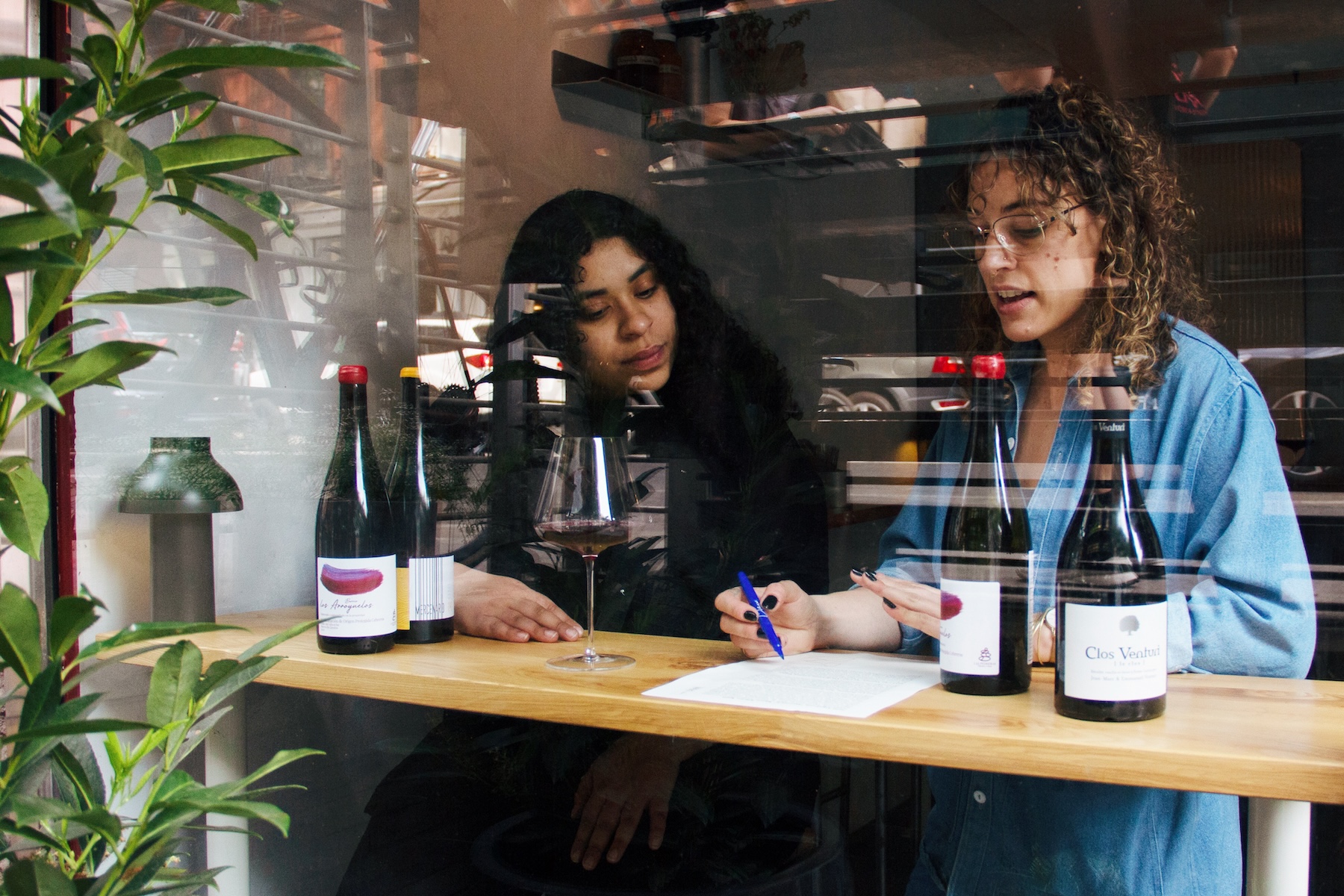
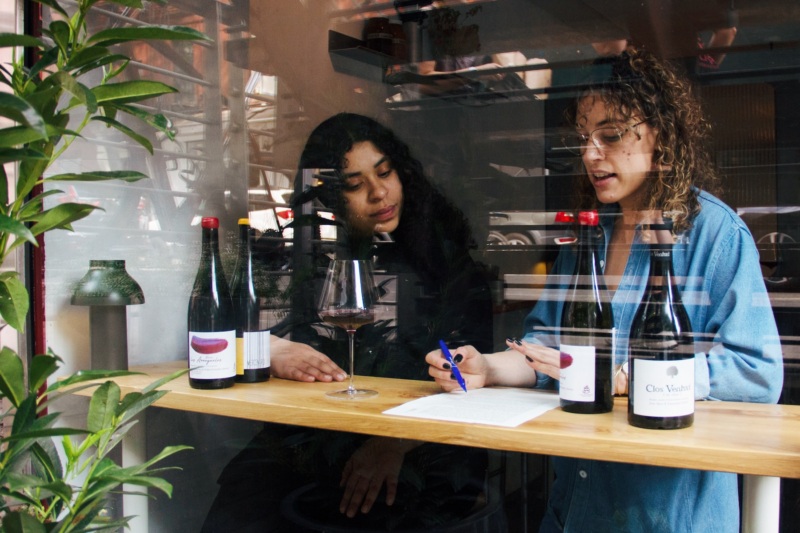
How much do you think that matters anymore? You look at wine lists around New York and they’re different than they’ve been in the past. But is it that money has made the reference wines scarce? Or just that we’re old, and the kids are drinking other cool stuff now? They like Spanish natural wine, or are deeply into skin contact.
I still think the phrase you used, “reference wines,” is the important one. I use it pretty much every day with the staff. The way I was taught, and the way I teach, is you have to know the history.
Take skin-contact wines, like, any of the big names aren’t even on a lot of lists today, Radikon or Gravner or whatever. That is such a foundational, important thing to understanding whatever the kids are drinking. You’ve got to know what Luis Rodriguez did to understand what the person after him is doing in Ribeiro. That’s just my opinion. Maybe it was dogmatically imposed upon me, but just jumping into whatever the new thing is would be like cooking French food with no understanding of Troisgros.
This takes me to my favorite analogy, which is art history and wine. There is this legitimate debate today, regarding questions of cultural imposition. Do you need to understand the classics? Do you need to be able to understand what Michelangelo did, or even what Monet did, to understand contemporary art? I know where I stand, and I suspect I stand where you stand. But I think you’d find many neighborhoods in Brooklyn where there would be vehement disagreement.
I’m not saying that a collection of modern art from someone who has never had the opportunity to “taste” landscape painting is not as great as something else. It all depends on the goal. Our goal here is to show where things came from, and where we think things are going. If we can achieve those two things, I’m a super happy business owner.
If there’s one thing you could change about wine in New York right now, what would it be?
When I was younger, there was a piece in maybe 2014 or 2015 about how all wine lists looked the same. The old knock was, these producers are on the list, everybody has ’em now. Today, I feel like everybody has to put new and different producers on, but they’re still kind of all the same.
The new hegemony instead of the old hegemony.
I just want it to all f***ing blend together. I don’t think you lose narrative sense by combining, not to keep mixing metaphors, but by combining different genres and classes and ages of art. It’s all about quality. What I want to change is that you’ve got to understand what makes something delicious in your own opinion. I wish people would just go out and drink exactly what they think is delicious. And sometimes I feel like it’s the new hegemony instead of personal taste.
At the same time, how much do you also feel the effect of younger diners — supposedly not drinking as much, and not drinking as much wine? (Although I think they’re drinking more wine than people suspect.) But when I used to go out, I had an expectation that you’re getting a bottle; it’s part of the meal. Now it’s a struggle to get someone to get a second glass.
Yeah, 100%. We are purposely shielded from that, in that we don’t have cocktails. And wine is the narrative driver of these restaurants. And yet, when I go to other people’s restaurants, I guess everybody can drink three gin martinis now. It’s just incredible.
There’s your brat summer.
It’s unreal, man. As we get older as a species, we seem to do things that are better for us. But what a strange thing that we have all this knowledge about the bad effects of alcohol, and the only thing that people gravitate toward is ice-cold gin.
John Cheever would be proud.
Exactly right. Any writer of the past would be having his happiest moments. And yet, with wine, something I think about that’s funny, is you have this Dimes Square thing. People go out and they’re smoking cigarettes and they’re drinking skin-contact wine, and that’s kind of cool. What will never be cool, of course, is these foundational, encyclopedic wines. And they shouldn’t be. They’re priced out of cool.
Maybe it was dogmatically imposed upon me, but just jumping into whatever the new thing is would be like cooking French food with no understanding of Troisgros.— Chase Sinzer
But I think what you’re talking about that’s funny is, even when I was younger and the most we spent was $50 or $60 on a bottle of wine, we still went to dinner when we were servers at Maialino, and we would get three $60 bottles of wine between five people. And that was the point of going out. That’s a very industry thing, and I hope that it still exists. I just think there’s got to be a home for it.
To be fair, in a lot of cases, those $60 bottles are …
They’re $95 now.
Or $110. Exactly. Double. So suddenly that becomes real money.
For sure. These things are real macro problems with the wine trade, especially when you become obsessed with wine. And to be frank, everyday plonk is not what you’re going out for on that one night of the week. But that silvaner, it’s still like $82 now. It’s tough.
I’ll tell you this though, dude. You go to the Chelsea Hotel, it’s a fantastic martini service. It’s $31. I’m like, I’m in, but I’m 35. If I was 22 and I spent $30 on a cocktail, my head would’ve fallen off. But martinis are a casualization. Drinking a bottle is a commitment, and it’s a communal commitment. Even at Penny, we hope to make sure that people still feel like, OK, it’s two of us. Let’s grab a relatively affordable bottle of wine. And that can be a quick, fun, easy thing. You have to push for people to feel that wine is cool, that it’s not this big commitment.
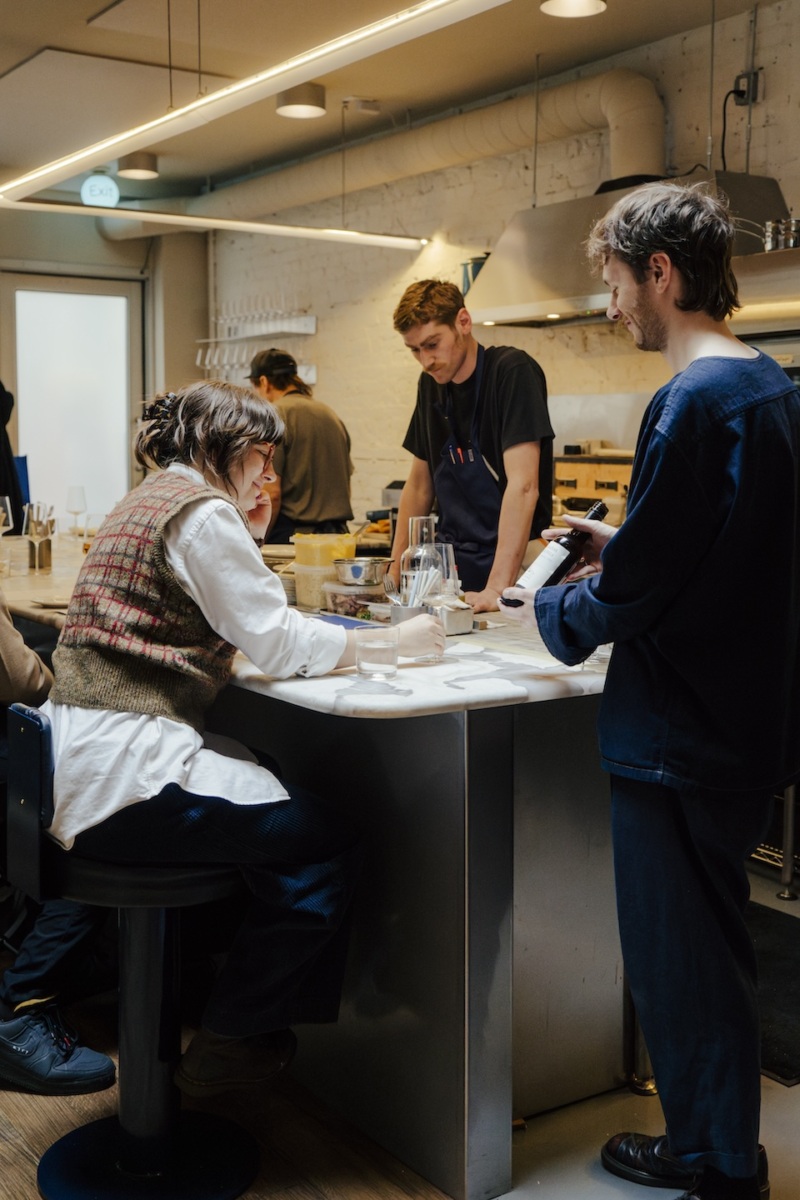

Commitment or no, what are you going to open for yourself at the party?
Nowadays, when someone asks me that question, I have two wine directors that have two different tastes. When I get Julia’s stuff, since it’s from the Claud cellar, it might be something a little more encyclopedic. Then, when I get something from Ellis and I’m up at Penny, it’s probably a Champagne producer I haven’t tasted. I’m lucky enough where somebody shows me things and I get to keep learning.
I love it. Wine daddy gets to keep having his eyes opened.
Honestly, it’s the coolest. The only sad part is there’s something unbelievably fulfilling to me about waking up and thinking about the wine list, and then I’d go to sleep thinking about the wine list. Because I’m a maniac, especially in my Ko days, even more so than Brooklyn Fare. I was so unbelievably obsessed with making that program what I thought was cool. And now I’m more of a coach, hopefully, trying to be as supportive as possible and getting somebody else’s vision there. But when you see someone look at their list and feel pride in it, and then you get to taste new things that they do, it’s much more fulfilling.
Get your tickets ($50/person) to the 90 East 10th Street Wine Party here.
Jon Bonné is Resy’s managing editor, a two-time James Beard Award winner, and author of “The New French Wine” and other books. Follow him on Instagram. Follow Resy, too.








